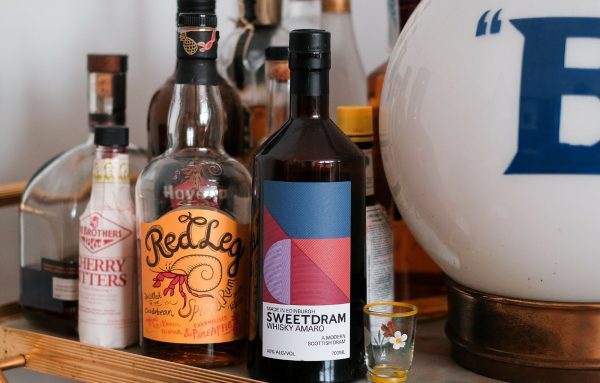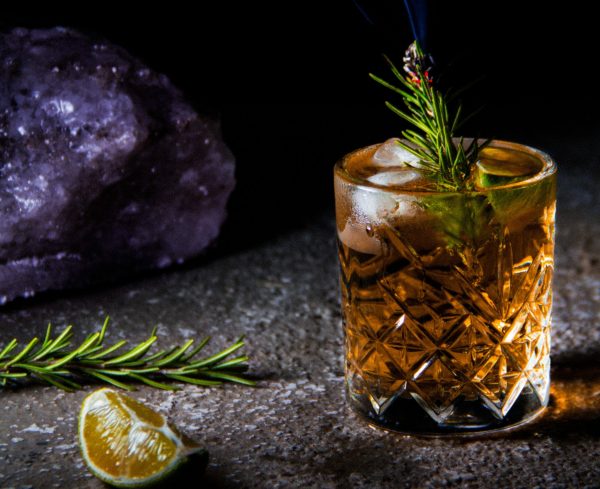According to the Distilled Spirits Council, the rum industry is growing. The Council’s annual economic briefing for 2019 reveals that global rum sales have increased from the previous year. In 2019, over 24 million 9-liter cases of the spirit were sold, amounting to $2.3 billion in revenue.
This was the first year that the rum market had shown growth since 2013. And though most of the sales were from flavored and spiced rum, there is no doubt that this spirit is starting to trend upward. One catalyst in this spike is the introduction of premium rum brands to the market. Through their products, these brands have shown how elegant rum can really be.
In the United States, more people are beginning to drink rum at the bar and in restaurants. No longer is this spirit designated for the beach or the nightclub.
Rum is known for its tropical palate and robust texture. It is traditionally drunk straight but is also a prevalent cocktail ingredient for mixed drinks like rum punch.
The industry is also growing because of the increasing attention on rum cocktails. Consumers are finally starting to realize the immense potential of this spirit and how complementary it can be in mixed drinks.
Rest assured, the rum trend isn’t going anywhere. Find out below why sipping rum is becoming so popular with Saucey.
What is Rum?
Rum is a distilled spirit produced from sugar cane, a natural byproduct of sugar. This full-bodied drink is fruity, tropical, and spicy.
Rum has always been popular in the Caribbean but in the United States only viewed as an alternative to whiskey and Scotch. For years, rum was reserved for simple drinks like rum and coke or frozen daiquiris.
When made properly, the palate of rum is actually very complex. As more brands start entering the industry, the overall quality of rum continues to improve.
However, this drink hasn’t always held the same high standards that it does today.
Rum was first produced commercially by American colonists in the 18th century. Residing in New England, the first settlers in the country greatly underestimated the climate of their newfound land.
Unable to grow other crops and in desperate pursuit of alcohol, the colonists developed a way to produce rum. At first, they were making beer with imported brandy from England.
Eventually, though, the relationship between the colonies and the motherland soured. This forced the settlers to start importing sugar cane from the Caribbean and making rum.
Since this period in time, the rum market has expanded throughout the entire globe. Nowadays, you can find rum being made in nearly every continent, including North and South America, Europe, Asia, and Africa.

Endless rum options
There are all different types of rum: dark, light or white, aged or spiced. There are also different variations of rum based on the location it was made in.
For instance, Dominican rum is usually more robust than the average rum, while Caribbean rum is naturally more tropical-tasting. Every region has its own rum recipes and processes for distillation and aging.
To take it a step further, every distillery has its own strategies and methods as well. Just because two distilleries are located in the same area does not necessarily mean producing the same rum.
Though there is a lot of flexibility granted to producers, there are some strict guidelines for making rum. Rum can be made anywhere in the entire world. But it must be fermented, distilled, and in most cases, aged in an oak barrel.
It must also be produced from sugar cane. Some people label their bourbon as rum, but bourbon is made from corn and not sugar cane.
Delicious food pairings with rum
As with most liquors that have a dense palate, rum is very versatile with food.
It can be enjoyed as an aperitif or digestif, before or after meals. It can be drunk with hearty meals like steak and poultry, but can also be used as a dessert drink, with sweets like chocolate cake and macaroons.
If you travel to the Caribbean, you’ll likely see this drink served with some fish-centered dishes.
One commonly served with rum is ceviche, a Latin American plate of raw fish cured in citrus, tomatoes, onions, and spices. Ceviche is paired well with citrusy cocktails like the rum cooler or rum cosmo.
It’s always a safe option to go with cheese, as well. Fresh, cut slices of cheese and salty, crunchy crackers match beautifully with the bold flavor of rum.
Our favorite food pairings are a sweet rum punch and some aged Swiss on a baked cracker. This is a mature blend of flavors that’ll have you snacking all night long.
Trendy cocktails with rum
A great way to enjoy rum if you’re inexperienced is through a refreshing cocktail. Rum can be a bit strong when it comes to acidity. For beginners, it’s a good idea to get acclimated with the spirit with a mixed drink.
Ever heard of an Old Fashioned? Well, you can make this classic cocktail with rum too. Just replace the whiskey with rum, and throw in some sugar and bitters. Then, garnish your drink with a slice of orange. Now, you’ve got a delicious rum Old Fashioned.
It is recommended to use aged rum for this drink. For an extra kick, you can also replace the sugar with a flavored liqueur. For extra sweetness, you can add simple syrup as well.
How about a Daiquiri? All you need for this drink is some white rum, simple syrup, and lime juice. This drink was invented in the 1800s in Cuba and remained a popular cocktail to this day. For the traditional daiquiri experience, serve it in a cocktail glass.
You can also freeze your Daiquiri for those hot summer days by adding your ingredients to a blender filled with ice.
Finding quality rum
With how much freedom rum producers are given, the market offers countless different styles and variations of the spirit. Ultimately, it is up to your personal preference to decide what rum works best for you, but there are some telltale signs of a quality rum.
You can usually determine if rum is well made by inspecting its bottle. Take a close look at the label. Look for the phrases “no additives” or “no sugar added.” Because of the loose restrictions on rum production, consumers must be on the lookout for additives that lower the purity of products.
If the brand says that it doesn’t use additives, you’re good to go. If it doesn’t say anything at all, then it’s likely that the bottle contains additives. Unfortunately, many brands avoid being transparent in their ingredients.
For the highest quality bottles, search for the label “AOC” on the packaging. This acronym stands “Appellation d’Origine Contrôllée,” or controlled appellation of origin, implying that the bottle was made under a specific set of production standards. One of these standards is the absence of additives like sugar.
The takeaway
Rum is finally gaining the respect it deserves. You can see this trend growing simply by spending some time in your local bar or club. Notice how many more people today are enjoying the spirit.
You may also notice that the median prices of rum are increasing. Just like all sought-after commodities, the price of rum, particularly premium rums, is starting to rise. It seems that people are beginning to appreciate the complexity of this drink and are becoming more willing to pay top-dollar for it.
There is no surprise that this drink is growing in popularity. In fact, it is a bit surprising that it’s taken this long for rum to receive its just due.
As time goes on, we hope to eradicate any misinformation about this drink and continue to uplift it as one of the world’s most unique spirits. Now that you know all there is to know about rum, we hope you will join us in our mission.




